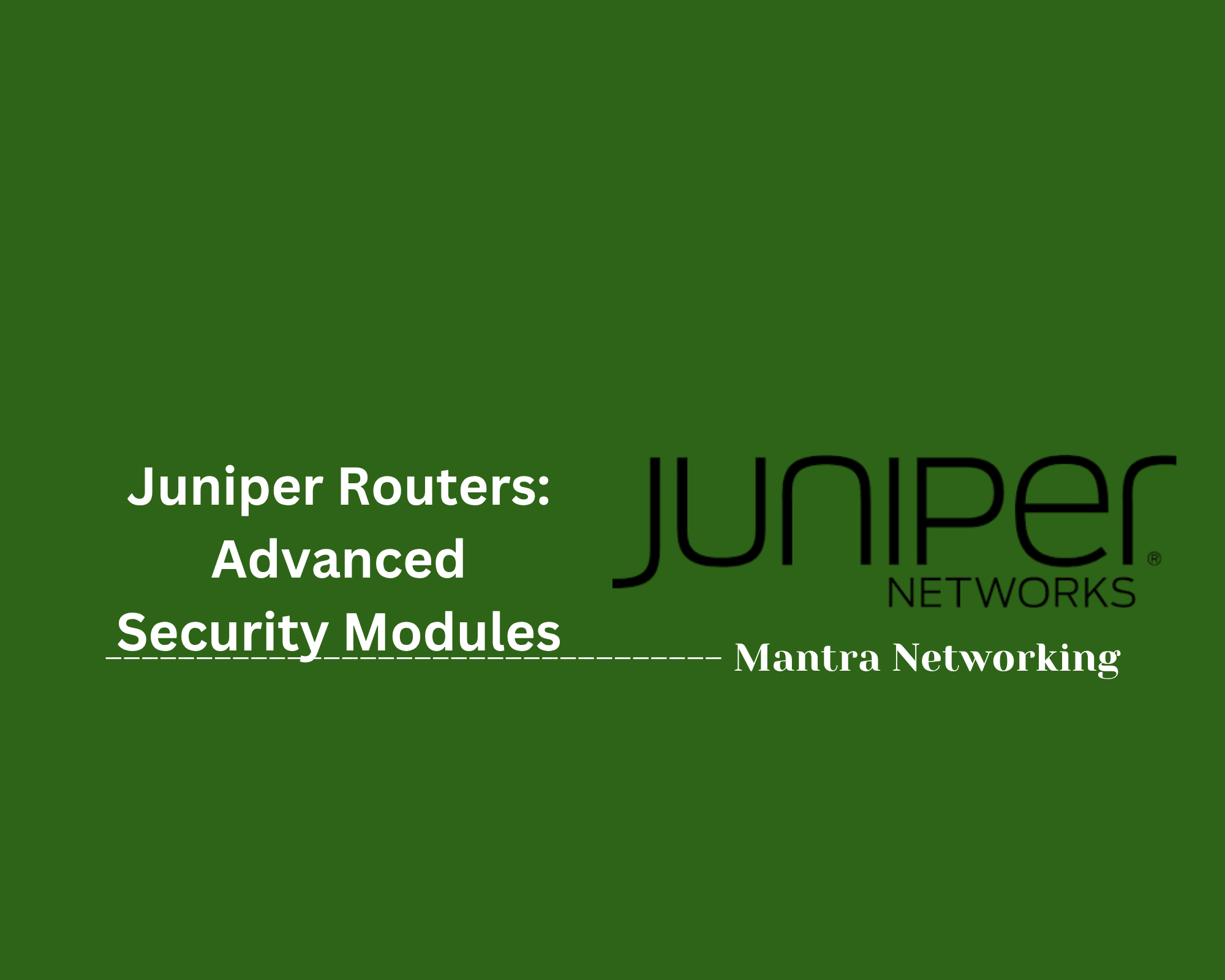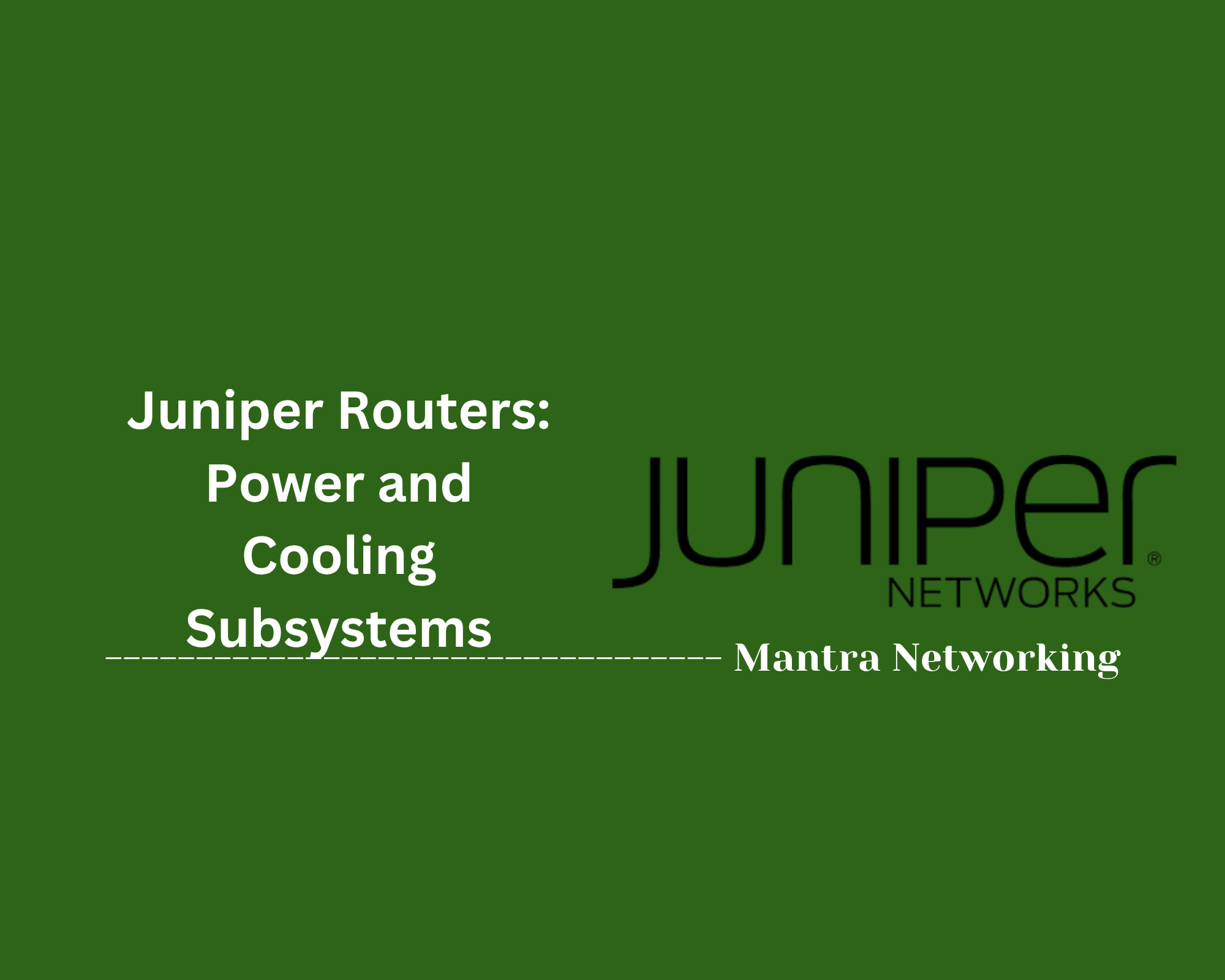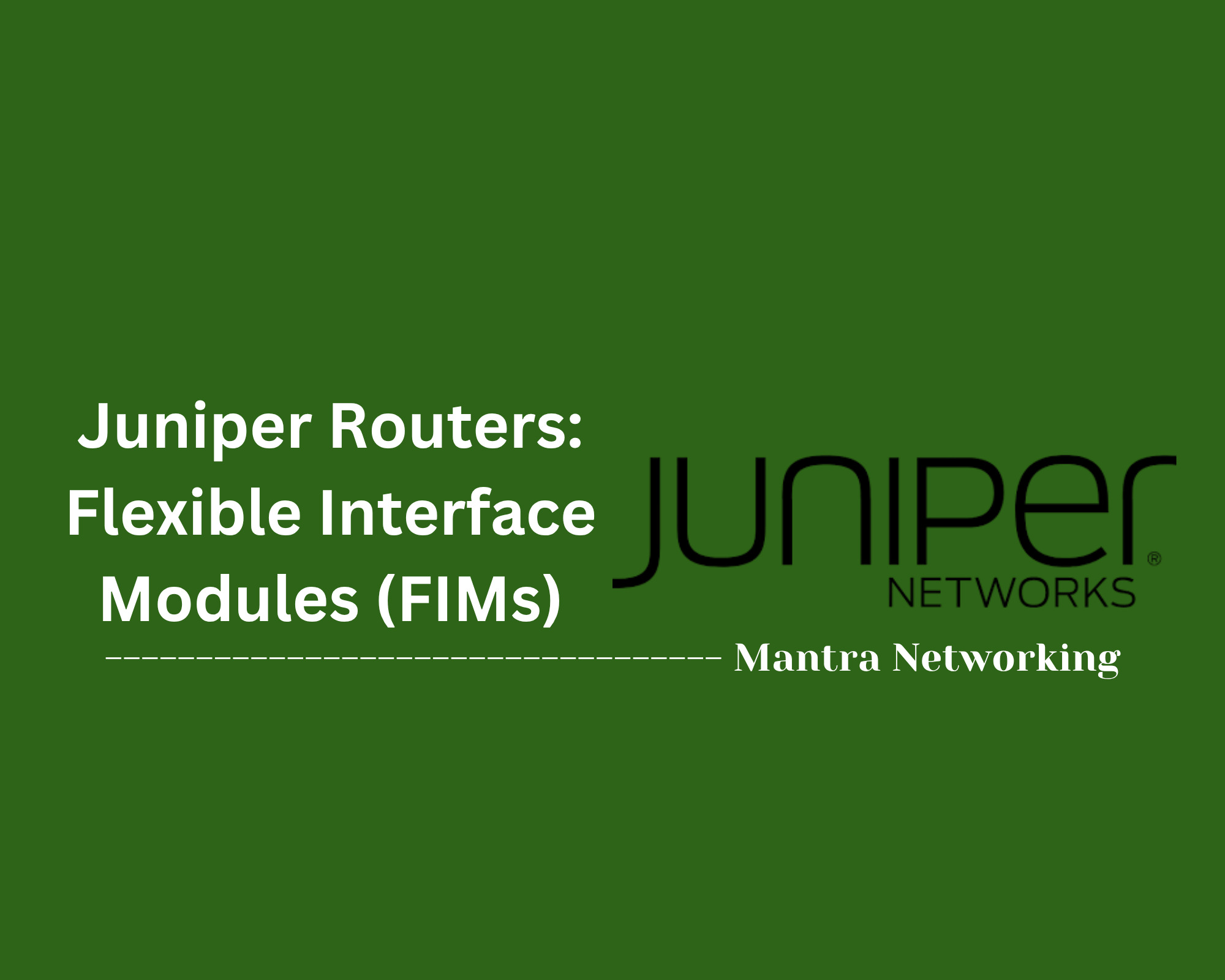Table of Contents
- Overview
- Key Terms and Definitions
- Junos OS Architecture
- Useful CLI Commands
- Control Plane Security
- Troubleshooting Tips
- Conclusion
Juniper Switches: Control Plane Overview
What Is the Control Plane?
The control plane is a critical functional component within any Juniper switch, responsible for handling all network protocol processing, management operations, and decision-making tasks. It performs routing protocol calculations, maintains network tables, and dictates the behavior of the entire switch.
Why Is the Control Plane Important?
- Network Intelligence: It manages dynamic activities, such as learning routing tables, determining network paths, and handling protocol exchanges (OSPF, BGP, etc.), making the network adaptable and efficient.
- Device Management: All switch management operations—including configuration, monitoring, and remote access—are controlled here.
- Security Layer: Many security mechanisms operate on the control plane (firewall filters, authentication, DDoS protections), defending the network’s brains from attack or misuse.
- Resiliency: In Juniper’s architecture, a robust control plane allows for advanced high availability features (like failover and routing engine switchover), minimizing service interruptions.
How Does the Control Plane Work?
- Separation from Data Plane: Juniper switches use a modular OS that separates the control plane (where decisions are made) from the data or forwarding plane (which performs high-speed packet forwarding). This prevents traffic issues from affecting network stability or management access.
- Routing Engine (RE): The core of the control plane, the RE, runs Junos OS and all routing and management functions. Protocol daemons here communicate with other network devices, constantly updating routing and forwarding tables.
- Interaction with Packet Forwarding Engine (PFE): The RE builds and updates the forwarding tables, which it then sends to the PFE. The PFE uses these to efficiently forward data packets, leaving the RE free to focus on control tasks.
- Management and Protocol Handling: All CLI, API, SNMP, or GUI management requests are processed here. Likewise, the initiation and maintenance of routing protocols happen exclusively in the control plane.
In summary, understanding the control plane in Juniper switches is vital for designing, securing, and troubleshooting enterprise and service-provider networks. Its effectiveness determines not just performance, but also network stability and security.
Key Terms and Definitions
Here are important terms you will encounter when learning about the control plane in Juniper switches:
- Control Plane: The logical part of a switch responsible for network protocol processing, routing decisions, and management functions. It directs device behavior and manages the flow of network traffic.
- Data Plane (Forwarding Plane): Handles the actual forwarding of packets to their destination, based on rules and routing information set by the control plane.
- RE (Routing Engine): The module within Juniper switches that performs all routing protocol calculations, system management, and control plane functions.
- PFE (Packet Forwarding Engine): A module responsible for high-speed packet forwarding and traffic processing in hardware.
- Protocol Daemons: Software components (such as OSPF, BGP, IS-IS) that run on the control plane and manage various network protocols.
Junos OS Architecture
Junos OS uses a modular architecture that separates the control plane from the forwarding plane to improve stability, security, and performance. Key aspects include:
- Modular Design: The operating system separates control and forwarding planes, allowing independent processing and increased system reliability.
- Routing Engine (RE) Role: The RE runs the Junos kernel and all control plane management applications. It handles routing protocol calculations, system management, and builds routing and forwarding tables.
- Separation Benefits: This isolation improves control plane resilience, enables efficient data plane operation, and enhances network security by limiting the scope of control plane processes.
Useful CLI Commands
Below are some essential CLI commands to monitor and troubleshoot the control plane on Juniper switches:
| Purpose | Command |
|---|---|
| View Routing Engine (RE) status | show chassis routing-engine |
| Check control plane CPU usage | show system processes extensive |
| Monitor specific protocol daemons | show system processes | match <protocol> |
| View routing table | show route |
| Check system logs | show log messages |
Control Plane Security
Protecting the control plane of Juniper switches is critical to ensure uninterrupted network operations and resilience against attacks. Junos OS provides multiple features and best practices for securing the control plane:
- Control Plane DDoS Protection: Juniper switches have built-in protection to detect and mitigate distributed denial-of-service (DDoS) attacks targeting the control plane. Default policers limit excessive traffic rates directed at essential processes, reducing the risk of overload and downtime[1][8].
- Firewall Filters on Loopback Interfaces: Implementing firewall filters on the logical (loopback) interface allows granular control over which management and protocol traffic reaches the Routing Engine (RE). Traffic can be whitelisted, rate-limited, or discarded based on specific rules, effectively blocking illegitimate or unnecessary access attempts[5][6].
- Rate Limiting: Further rate limiting can be applied to incoming management connections (like SSH or Telnet) to prevent brute force or flood-based attacks. These controls restrict the number of new session attempts per minute or per protocol, reducing the attack surface[12][13].
- Authentication and Encryption: Secure management access by enforcing strong authentication (such as SSH instead of Telnet), and ensure all management traffic is encrypted to thwart eavesdropping and unauthorized access[5].
Best Practices:
- Apply strict firewall filters to the loopback interface to limit access only to trusted sources and essential protocols.
- Monitor control plane CPU and memory utilization regularly to identify abnormal patterns.
- Keep the system updated with the latest Junos OS releases and security patches.
Troubleshooting Tips
Effective troubleshooting of the control plane on Juniper switches involves monitoring system resources, analyzing logs, and isolating issues systematically. Here are some practical tips:
-
Monitor RE CPU and Memory Usage:
High CPU or memory utilization on the Routing Engine can indicate control plane overload or misbehaving processes. Use
show chassis routing-engineandshow system processes extensiveto track resource usage. -
Check Protocol Daemon Status:
Verify that routing and control plane protocol daemons are running normally using
show system processes | match <protocol>. -
Review System Logs:
Inspect system logs for errors, warnings, or notifications related to control plane issues by using
show log messages. This can help identify underlying causes or recurring problems. -
Examine Core Dumps:
If the Routing Engine experiences crashes or unexpected restarts, check for core dump files with
show system core-dumps. These files provide valuable data for root cause analysis. - Compare Data Plane vs Control Plane Statistics: Cross-reference packet forwarding performance (data plane) with control plane logs to isolate if issues stem from routing decisions, hardware forwarding, or external network events.
- Use High Availability Features: During troubleshooting or maintenance, leverage Graceful Routing Engine Switchover (GRES) and Nonstop Active Routing (NSR) to minimize service impact.
Conclusion
Throughout our exploration of Juniper Switches and their control plane, we've uncovered several key points:
- The control plane is the brain of the switch, responsible for protocol processing, network decision-making, and system management.
- Separation of control and data planes in Juniper switches ensures stability, security, and high performance, allowing each plane to excel in its specialized tasks.
- Critical components like the Routing Engine (RE) and Packet Forwarding Engine (PFE) work together, enabling efficient operation while keeping network management and packet forwarding tasks distinct.
- Effective control plane security and monitoring are essential. Juniper provides robust features—such as DDoS protection, firewall filters, and strong authentication—to defend the control plane from threats.
- Troubleshooting and high availability features help maintain service continuity, minimize downtime, and swiftly resolve control plane issues when they arise.
By understanding how the control plane operates in Juniper switches, you're better equipped to design, secure, and manage modern networks. Whether your goal is optimal performance, ironclad security, or smooth day-to-day operations, mastery of these concepts puts you ahead.
Thanks for joining us on this journey into the heart of Juniper networking! If you have any questions or want to dive deeper, feel free to reach out or explore further Juniper documentation. Happy networking!



